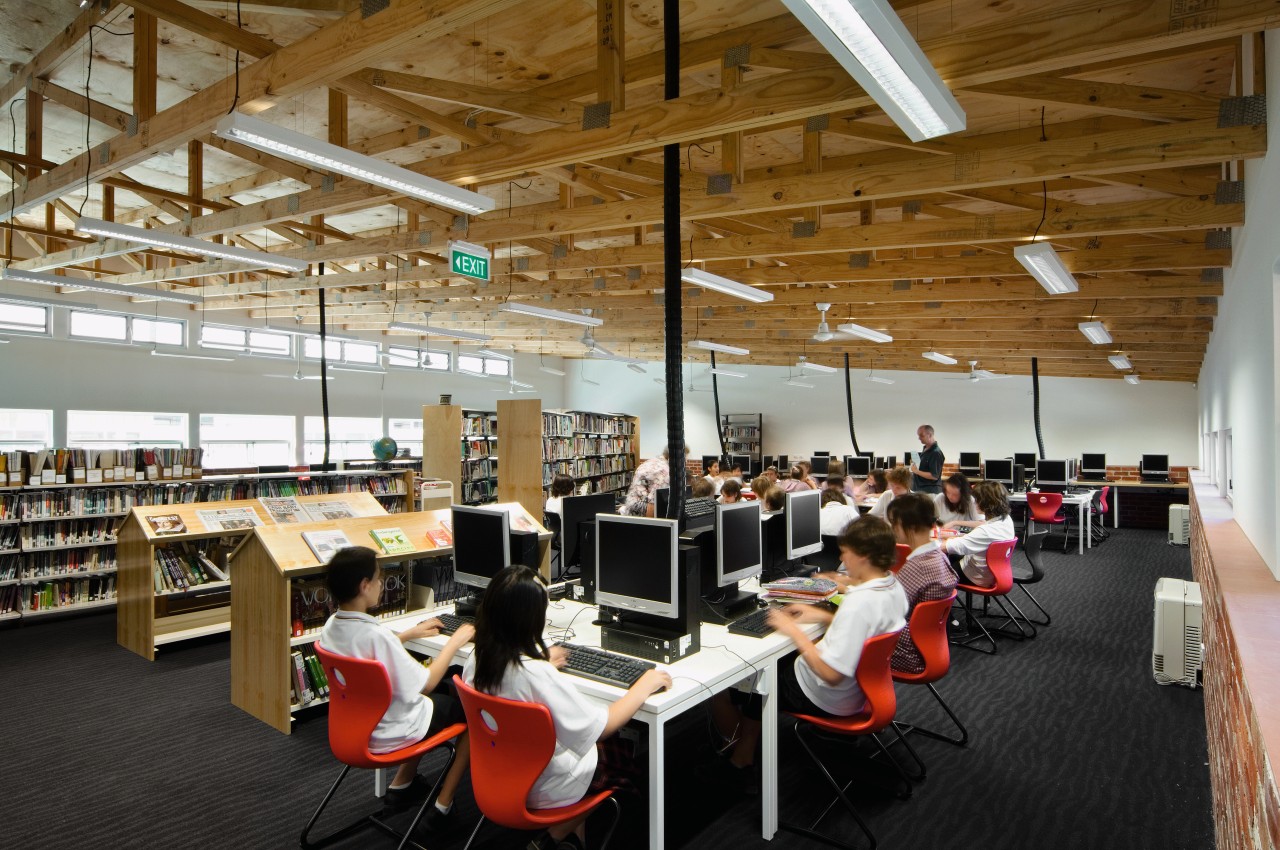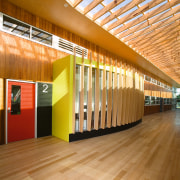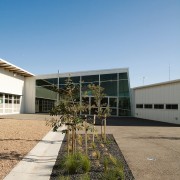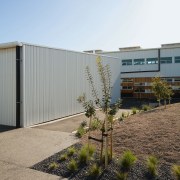TOO cool FOR school
A high school shows how buildings can adapt to climate change, by using tried-and-true principles of passive design

These days, environmentally sustainable design is a topic everyone is interested in. We all want to find ways to reduce energy consumption and conserve natural resources. Even so, many of us are unaware of the basic passive design principles people relied on to keep buildings cool in the days before air conditioning, says Spowers architect Jenni Webster.
Spowers went back to these principles when it was commissioned by Williamstown High School to create a design that would lead the way in adapting to climate change. A clear vision for the new Bayview Street Campus came from the school principal to provide for a sustainable future; to build an outstanding environmental education facility; and to inspire students to become involved in environmental programmes.
"With a budget from the Department of Education of just $11 million, fulfilling that vision was always going to be a challenge," says Webster. "Rather than spending the money on expensive innovations, we decided to use well-tested, low-technology ideas in a new way. We aimed to provide a catalyst for good environmental design for other schools."
First, a temporary school made up of 30 portable units was set up for staff and students to work out of during the 12-month construction period. The existing buildings, formerly Point Gellibrand Girls' High School, were demolished, and the new buildings were oriented correctly on the site.

"Williamstown is lucky to have a site right on the bay, with plenty of coastal breezes," Webster says. "The north-south orientation of the design makes use of the prevailing southerly winds for cross-ventilation. Staff and students can enjoy the sea views, and it gives the school science wing a close connection to Jawbone Reserve and Port Philip Bay."
Natural ventilation is used throughout the school, so there is no need for air conditioning. Low windows on the seaward side of the building draw in cool air, which rises as it warms and flows out through high-level louvres on the other side. Warm air is purged at night via these louvres and thermal chimneys. Except at the entry, there are no windows on the east and west, to avoid heat build-up and morning and afternoon glare.
Passive design to save energy also means using the minimum number of materials, and using recycled and unfinished products wherever possible.
"The walls are mostly made of reverse recycled brick veneer, which has good thermal mass and helps stabilise the temperature inside. We reused or refurbished existing school furniture, and also recycled hardwood floors from the original buildings," Webster says. "We restricted our use of steel, which takes a lot of energy to produce, in favour of materials with lower embodied energy, such as plantation timber. We minimised the use of laminates and vinyls, and used paint with low volatile organic compounds."

Other environmentally sustainable design features include low-energy light fittings, a solar hot-water system in the Home Economics wing, and solar panels that generate electricity to power irrigation for the horticulture facility. The roof of the entire school was finished with white ceramic paint, which reflects sunlight and can reduce summer heat gain by as much as 5°C.
An important requirement was that the design help students understand environmental principles. One way this was achieved was by making energy conservation strategies highly visible. Rainwater collection tanks in the school grounds are a variety of bright colours, and ceiling beams are left exposed to raise awareness of low-energy construction techniques.
"Students will soon be able to monitor the school's daily energy use. Electricity, gas and water usage will be displayed on LCD panels, to encourage ongoing, active energy-saving measures," says Webster.
The new school received awards for Best Overall School Design and Best Secondary School at the 2007 School Design Awards. It is one of three public schools to pilot the Green Star Education rating tool, developed by the Green Building Council of Australia. This tool will allow designers to benchmark the environmental performance of all future educational facilities.
Credit list
Architect
Construction company
Quantity surveyor
Cladding
Doors
Columns
Flooring
Paints and varnishes
Bathroomware
Lifts
Interior designer
Civil engineer
Landscaping
Roofing
Hardware
Ceiling
Wallcoverings
Office furniture
Signage
Story by: Jane McKenzie
Home kitchen bathroom commercial design
From farmhouse to farmstead
Walk this way – garden pathways to lead your thinking
Objets central
Commercial Design Trends Vol. 24/4
This edition of Commercial Design Trends celebrates knowledge with an array of educational and research facilities that ...
Read More












